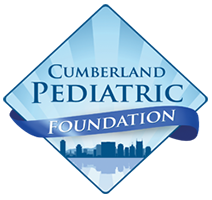Practice Tips
Read Original Article Here:
https://www.aap.org/en-us/advocacy-and-policy/aap-health-initiatives/poverty/Pages/practice-tips.aspx
Screening for Basic and Social Needs and Connecting Families to Community Resources
Pediatric practices can use simple screening tools that ask families about basic needs. These screening tools will help identify families with unmet needs, and in response, practices can make referrals to appropriate community resources and services.
To get started with screening:
- If your practice is not currently screening for basic needs, consider starting with one issue, such as food insecurity.
- Screen families universally, rather than targeting specific families. Explain to families that the screening is universal.
- Work with your practice team to determine how to screen families in the most effective and sensitive manner.
- Show empathy when talking with families about basic needs. Be willing to say “I don’t know but I will try to help you find out.”
- Recognize that you won’t be able to address every concern, and that you don’t have to “fix” everything on your own.
- Work with your practice team and community partners to identify resources and services that are available for families who have positive screens.
Suggested Screening Tools
The following chart includes widely available free screening tools. The AAP does not endorse any specific tool, but encourages pediatricians to use the tools that best suit the needs of their practice.
| Screening Tool | Description | References |
| The Hunger Vital Sign | 2-question validated screening tool based on the US Household Food Security Scale to identify young children in households at risk of food insecurity. | Hager ER, Quigg AM, Black MM, et al. Development and validity of a 2-item screen to identify families at risk forfood insecurity. Pediatrics. 2010;126(1). |
| Income, Housing, Education, Legal Status, Literacy, and Personal Safety (IHELLP) | Suggested screening questions related to Income, Housing, Education, Legal Status, Literacy, and Personal Safety. | Kenyon C. et al. Revisiting the social history for child health. Pediatrics 120(3):e734–e738. |
| Well Child Care, Evaluation, Community Resources, Advocacy, Referral, Education Survey Instrument (WE CARE) | Survey instrument to screen for family psychosocial problems including education, employment, childcare, housing, food security, and utilities. | Garg A, Toy S Tripodis Y, et al: Addressing Social Determinants of Health at Well Child Care Visits: A Cluster RCT. Pediatrics Feb 2015; 135(2): 296-304. |
| Safe Environment for Every Kid SEEK Parent Screening Questionnaire (SEEK) | Validated tool is a questionnaire to screen families for common problems related to child maltreatment, including parental depression, parental stress, and domestic violence. | Dubowitz, H. et. al. Pediatric primary care to help prevent child maltreatment: the Safe Environment for Every Kid (SEEK) model. Pediatrics. 2009; 123: 858–864. |
| Survey of Well-being of Young Children (SWYC) | Screening instrument includes sections on developmental milestones, behavioral/emotional development, and family risk factors such as substance abuse. | Sheldrick, R.C. & Perrin, E.C. Evidence-based milestones for surveillance of cognitive language and motor development. (2013) Academic Pediatrics. 13(6):577-86. |
Connecting Families to Community Resources and Services
Resources are often available in the community to help families with unmet basic needs.
To get started with making community service referrals:
- Download the resource referral template for completion in your practice. When completing the template, review the links to national and state resources for assistance with finding a local resource. View a completed sample template.
- Work with community partners and other service providers to identify local services and resources. Helpful partners may include local public health departments, hospitals, social workers, legal aid organizations, community action agencies, non-profit and faith-based organizations.
- Work with your practice team to complete and update your local resource template as needed. Students, volunteers, administrative staff, and medical staff can work together to complete the template.
- Share your completed resource template with other pediatricians, family physicians, and your AAP Chapter.
- Develop partnerships with local organizations that assist low-income families. Take a tour of your community and meet with community and organizational leaders.
- Participate in local and state advocacy to address resource gaps in your community. Look for community coalitions and other advocacy partners.
Improving Processes
- Develop a process for evaluating the effectiveness of your practice’s screening and referral activities.
- Invite feedback from families and integrate feedback into quality improvement activities.
Additional Resources:
Some national services may also be able to assist with finding referral resources including:
Benefits.gov is the official benefits website of the U.S. government and includes information for citizens to identify benefits that they may be eligible to receive, and application information. Benefits address a variety of needs including food/nutrition, health care, housing and utilities, child care, and tax assistance.
United Way 211 is a free national telephone service that helps identify health and human services.
Cap 4 Kids provides information on community services for children and families in select cities.
The National Center for Medical-Legal Partnership provides resources for embedding civil legal services into health care settings, in order to address legal and social needs. Medical Legal Partnerships have demonstrated positive impacts for patients and health care settings.
Health Leads is a national organization that utilizes volunteer students within health care settings, to screen for basic needs and help make referrals to resources in the community.
Help Me Grow is a system that assists states in identifying children at risk for developmental and behavioral problems, then helps families find community-based programs and services.
Questions or comments? Contact Us.
– See more at: https://www.aap.org/en-us/advocacy-and-policy/aap-health-initiatives/poverty/Pages/practice-tips.aspx#sthash.g855z5Mz.dpuf
